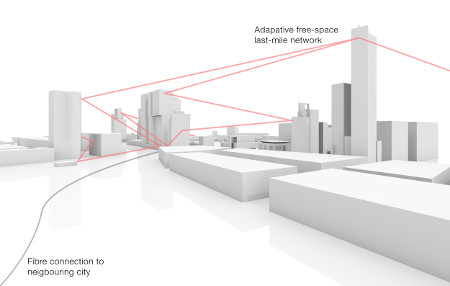Fiber optics were a major breakthrough in the industry, enabling record-breaking speeds of data transfer. That did not stop researchers and scientists from discovering even faster rates of data transfer. The latest research from the students of the University of Glasgow, working with their colleagues from Germany, New Zealand, and Canada have made groundbreaking progress with their twisted photons research.
Photons have been used in the past to carry information from one place to another and many experiments have been run to test their data carrying ability. What makes this research important is that the photons are able to carry this data wirelessly, drastically increasing the speed of data transfer.
The researchers have published the study in Science Advances in which they explain optical angular momentum (OAM). This is the concept of twisting light across open spaces. The photons were twisted by passing them through special holograms, giving them the desired OAM. These twisted photons, having the ability to travel across open spaces can carry more data in each transmission. The experiments in Germany showed that the method was effective across a mile of free space replicating an urban environment with all the potential sources of signal disruption.

With huge amounts of data being consumed these days, a faster and more reliable source of data transfer is necessary. “In an age where our global data consumption is growing at an exponential rate, there is mounting pressure to discover new methods of information carrying that can keep up with the huge uptake in data across the world,” Dr. Martin Lavery, head of the Structured Photonics Research Group at Glasgow, said in a press release.
“A complete, working optical angular momentum communications system capable of transmitting data wirelessly across free space has the potential to transform online access for developing countries, [defense] systems and cities around the world,” he added. Since fiber optics remain the fastest way of transferring information, Lavery believes that their method can “give us the bandwidth of [fiber], but without the requirement for physical cabling.”
Even though the method of twisted photons is effective, it is limited for now. Photons cannot be relied on to transmit data indoors. The limits of data it can handle effectively are still unknown, as is the effect of extreme weather conditions on the ability to carry this data.
That being said, it is still a promising discovery and can pave the way for future developments. “With these new developments, we are confident that we can now re-think our approaches to channel [modeling] and the requirement places on adaptive optics systems,” said Lavery. “We are getting ever closer to developing OAM communications that can be deployed in a real urban setting.”


